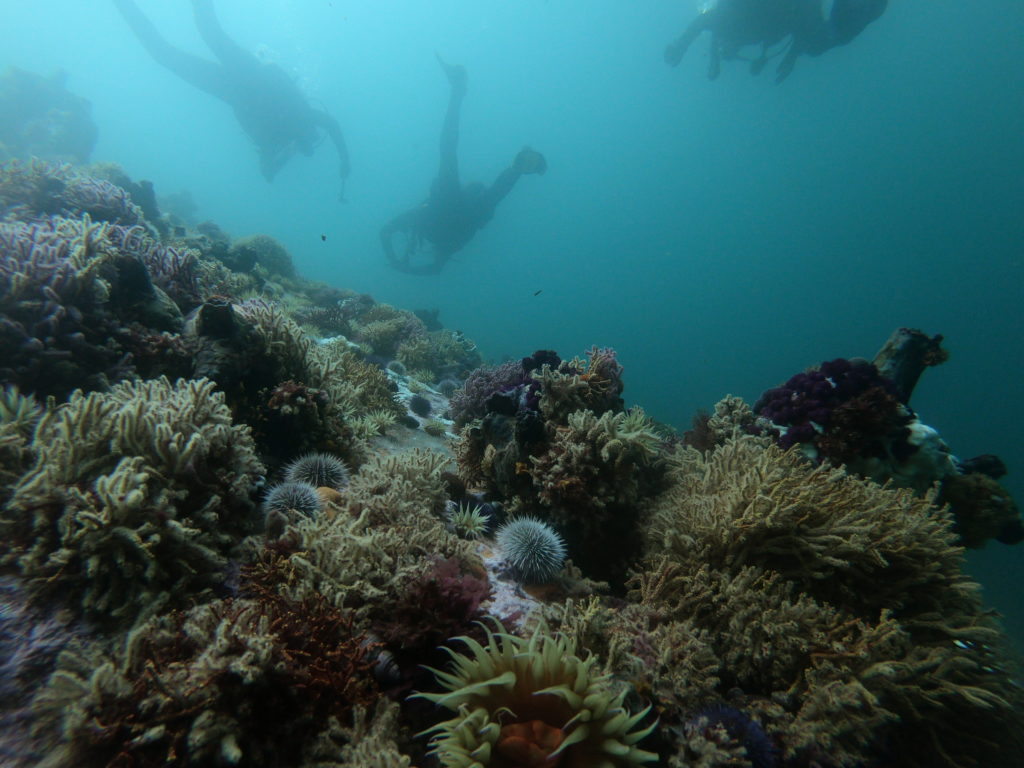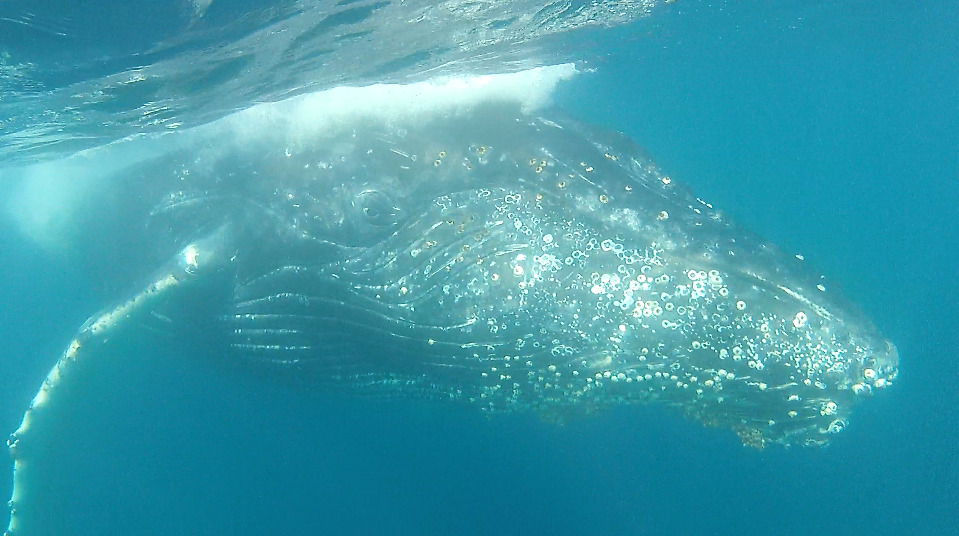This message has been transcribed from my personal handwritten journal that I write in daily.
After signing up for my deep diving course through Impact Divers, the collaborative company alongside Cape RADD, I was told that life is different 40 meters down. Everything is more significant, stranger, and more likely to cause you some trouble with IDing certain species. My initial entry to this depth was alongside my good mate Dillan. Upon our descent in my final qualifying dive, I was greeted with sea fans that spread the length of myself on the rocky reef below. Something is satisfying about seeing the empty blue canvas beneath you begin to paint the picture of the sea floor as the light penetrates the ocean’s pressure. The painting is something not often described, as it would do no justice to attempt to illustrate the results of millions of years of pure evolutionary wonder in depth.
With the clarity around 20 meters, it was easy to lose concentration on my dive buddy. It was a quick one, only around 25 minutes long since we were at depth. The amount of compressed air in your tank is approximately 3 times smaller at 30 meters because you have about 3 times as much pressure as you do on the surface. Therefore, the air volume in your tank will deplete sooner due to the pressure. However, the stunning visibility and seascape were apparently only the start of our dive.

While ascending, the blue around us began to grow lighter in tint and warmer in feel. Finally, we stopped at our safety stop around 5 meters to allow any excess nitrogen buildup to dissolve. This is a precautionary measure, as we never attempt to do a decompression dive. However, around 2 minutes into our safety stop, my eyes catch a shadow from the depths below.
There is something humbling about diving. You begin to understand that the world we know on land is only the start of the rich history of science and evolution that exists on our planet. Things much more prominent and smaller than you have survived much longer, and for a good reason. However, this humbling attitude did not make a large black shadow from the blue canvas any less intimidating.
Tapping Dylan on the shoulder, I thought I was hallucinating due to getting knocked, the recreational term for Nitrogen Narcosis. A non-harmful side effect of deep diving, Nitrogen Narcosis, can cause you to act as if you had consumed one or two more beers than you should have. We looked down to the east and saw the immense shadow swim with grace from the blue abyss.
A 15-meter Humpback whale had emerged from my sea-soaked eyes and began to glide gracefully in our direction. Around 6-7 meters away, it slowed down next to us to look us in the eyes and then continued on the path it was venturing. I immediately began to smile and laugh, which inevitably led to an emotional moment for me. At that moment, I realized that my childhood self would want to be who I am today. Nothing else in the world would make me feel this way other than the results of divulging my passion and appreciation of the sea.

As a journalist and photographer, it was one of those moments where I was glad that I didn’t have my camera on me. It allowed me to be one with the beauty across from me, who I have so much to learn from. I appreciated every frame per second through my own eyes instead of a camera lens.
My father calls it a Snow Cat, a reference to the movie The Secret Life of Walter Mitty. In the film, a famous wildlife photographer explains that sometimes he doesn’t take photos of nature that others would because it deserves to be appreciated by himself, primarily before an entire population.
So, I guess I found my Snow Cat.